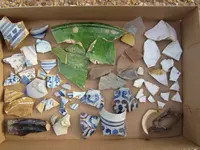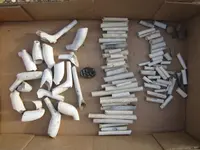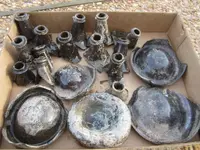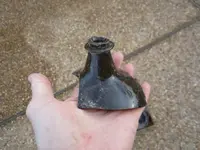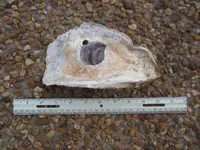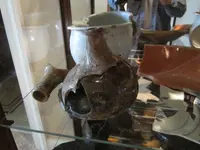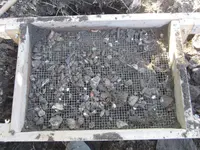Bill D. (VA)
Silver Member
- Joined
- Oct 7, 2008
- Messages
- 4,711
- Reaction score
- 6,212
- Golden Thread
- 6
- Location
- SE Virginia
- 🥇 Banner finds
- 6
- 🏆 Honorable Mentions:
- 2
- Detector(s) used
- F75 SE (land); CZ-21 (saltwater)
- Primary Interest:
- Other
Finally got all the stuff cleaned up which is a real job. The pipe stems are always the hardest as there are so many of them, and I also like to clean out the bore holes so I can take measurements using drill bits. Speaking of that, I performed an analysis using the Binford regression formula to determine the mean date of manufacture of the pipe stems, which corresponds very closely with the site occupancy dates since pipes were usually broken and discarded quickly. By measuring the diameter of all 98 stems and computing a weighted average, and then plugging that value into the formula (found in Hume's books and others), I calculated a mean date of 1704. That's probably quite accurate due to the large sample size, and it also matches up very nicely with the artifacts we've been digging in this pit for the last few years. Generally the age of finds ranges from around 1675 to 1725 give or take a few years. All of the black glass bottle spouts and bases are from pancake onion bottles that date from the 1690-1710 era for the most part. We've found many hundreds of these pieces over the years, yet only 2 whole bottles have been recovered. There's so much glass in these pits that it would be totally impossible to attempt any reconstructions. The closest I've come to digging a whole bottle at this site is shown in the last pic below. I can't tell you how awesome it would be to dig a whole pancake onion with a seal, but that's probably never going to happen at this site except under the most extraordinary of circumstances. But that's not going to keep me from trying ......
Attachments
Last edited:
Upvote
12

